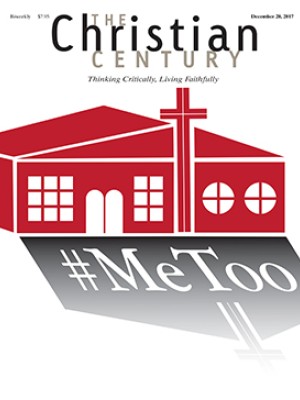Small religious college closes as others struggle to survive
St. Gregory’s University in Oklahoma will close in December. It's the latest small religious college to close in an increasingly competitive market.

Duncan Tiemeyer chose St. Gregory’s University because he wanted a faith-based education that would teach him more than how to succeed in a career.
The 550-student Catholic liberal arts college in Oklahoma traces its roots to French monks who moved to Indian Territory in 1875 to educate Native American and settler children.
“Here, we are taught not only to focus on our five-year plan but also our 100-year plan and our 500-year plan,” said Tiemeyer, 22, a senior business and theology major from Houston. “Are we living our lives in a way that is getting us to the next life? Are we going to be able to go to heaven?”
However, the brand of education offered by St. Gregory’s, where Benedictine monks still pray daily in a chapel beside a cemetery where their predecessors are buried, will come to an abrupt halt at the fall semester’s end.
Michael A. Scaperlanda, St. Gregory’s president, compared small Christian colleges to small businesses.
“In the pre-Wal-Mart world, mom-and-pop shops could survive and thrive,” Scaperlanda said. “In the Wal-Mart world, you need to have a niche market and very sophisticated business practices, and I think that has been difficult for many small Christian universities, including St. Gregory’s.”
Read our latest issue or browse back issues.
The financially strapped Roman Catholic institution 40 miles east of Oklahoma City is just the latest small religious college to close in an increasingly competitive higher education marketplace.
- Grace University, a Christian college in Omaha, Nebraska, will end operations in May because of financial and enrollment challenges.
- Marygrove College, a Catholic liberal arts institution in Detroit, will shut down its undergraduate programs in December.
- Catholic-affiliated Saint Joseph’s College in Rensselaer, Indiana, did not reopen this fall.
Roughly one-third of the small private colleges rated by Moody’s Investors Services, an international financial research company, generated operating deficits in 2016, an increase from 20 percent in 2013, MarketWatch reported in June. A major reason is a record level of tuition discounts, “a practice that’s financially riskier for small colleges that have fewer sources of revenue to rely on,” wrote MarketWatch, which offered data on religious schools specifically.
St. Gregory’s, Oklahoma’s only Catholic university, had hoped a $12.5 million rural development loan from the Citizen Potawatomi Nation made possible by federal money disbursed to the tribe would keep it alive. To qualify for the loan, the school even de-annexed from Shawnee, a city of 31,000, to meet the requirement of being located in a rural area. However, the U.S. Department of Agriculture denied the loan, saying St. Gregory’s wasn’t in a rural area at the time of the most recent U.S. census.
“Once the loan was denied, we were basically out of cash, and we needed to let our students find new homes quickly,” Scaperlanda said. “There was really no time to appeal the decision.”
As religious colleges die, it’s society that loses out, he added.
“Students who go to a Catholic or a Protestant or even a Jewish or Islamic university—any of those faith-foundation universities—have a framework for life and can see their role as an accountant or a nurse within the context of a deeper meaning,” he said.
Lawrence Stasyszen, abbot and chancellor, said in a statement that St. Gregory’s monks will keep serving the Catholic community.
“We maintain our commitment to pray for all who have attended and supported St. Gregory’s over the years and will explore new ways of contributing to the culture of Oklahoma.”
In its final weeks, the university focused on helping students find new educational homes at schools such as Oklahoma Baptist University just down the street and Franciscan University of Steubenville, Ohio, which is 1,100 miles away.
Both those universities and a number of others, both public and private, have sent recruiters to St. Gregory’s.
As life lessons go, this one is heartbreaking for students, but it can also build faith, said Meg Hunter-Kilmer, St. Gregory’s on-campus missionary.
“It’s really a tragic thing for them to lose their home and the future they had planned for themselves, but we’ve just tried to remind them that this is life,” said Hunter-Kilmer, a graduate of the University of Notre Dame in South Bend, Indiana. “Your plans being ruined happens all the time. We have to learn how to move on, how to get up, how to trust that the Lord is leading regardless of whether we can see where the pillar of fire and the cloud are taking us.”
Tiemeyer, who is the Student Government Association’s president, has created a GoFundMe page with a goal of raising $15,000 to help the 110 faculty and staff members losing their jobs right before Christmas.
He’s unsure of his own future. He has enough credits to graduate with his business degree. But he’s four courses short of completing his theology major and is considering whether to become a priest, so he applied to go to seminary through the Archdiocese of Oklahoma City.
“We’ll see if that’s what God wants,” Tiemeyer said. —Religion News Service
A version of this article, which was edited on December 19, appears in the December 20 print edition under the title “Small religious college closes and many others struggle to survive.”






